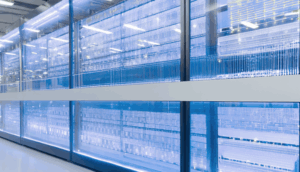In the demanding environments of industrial and medical settings, reliable data transmission is paramount. From controlling complex machinery on a factory floor to transmitting critical patient data in a hospital, the cables used play a vital role in ensuring seamless operation. These aren’t your average consumer-grade cables; they are specifically engineered to withstand harsh conditions, minimize interference, and guarantee consistent data integrity. Understanding the nuances of industrial and medical data communication cables is crucial for anyone involved in designing, implementing, or maintaining these systems.

One of the key considerations in optimizing data transmission is cable selection. Different applications require different cable types. For instance, shielded twisted pair (STP) cables are often used in environments with high electromagnetic interference (EMI) to protect data signals from corruption. Fiber optic cables, on the other hand, offer superior bandwidth and immunity to EMI, making them ideal for long-distance transmission and applications requiring high data rates, like medical imaging. The correct selection involves considering factors such as data transmission speed, distance, environmental conditions (temperature, humidity, chemical exposure), and regulatory compliance.
Beyond cable type, proper installation and maintenance are equally important. Incorrectly terminated cables or damaged connectors can lead to signal degradation and intermittent communication failures. Regular inspection for signs of wear and tear, proper grounding, and adherence to industry best practices are essential for maintaining optimal performance. In medical settings, adherence to strict hygiene protocols is also crucial to prevent contamination and ensure patient safety. Cable management systems, such as cable trays and conduits, help to organize and protect cables, preventing damage and facilitating maintenance.

Furthermore, advances in cable technology are constantly pushing the boundaries of data transmission capabilities. New materials and construction techniques are leading to cables with improved flexibility, durability, and bandwidth. For example, Ethernet cables adhering to the latest standards (e.g., Cat 6a, Cat 8) offer significantly higher data rates than older versions. Similarly, advancements in shielding technology provide enhanced protection against EMI and radio frequency interference (RFI). Staying informed about these advancements is crucial for optimizing data transmission systems and ensuring future-proofing.
Finally, compliance with relevant industry standards and regulations is non-negotiable. In the medical field, cables must meet stringent safety and performance requirements to ensure patient safety. In industrial settings, cables must be able to withstand harsh environmental conditions and comply with standards related to EMI/RFI emissions and susceptibility. Choosing cables that are certified by reputable organizations and adhering to relevant regulations are essential for mitigating risks and ensuring the reliability of data transmission systems. By carefully considering cable selection, installation, maintenance, technological advancements, and regulatory compliance, organizations can optimize data transmission in industrial and medical environments, leading to improved efficiency, safety, and overall performance.